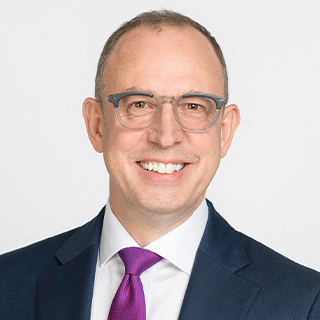
Craig Claughton
Chairman, Financial and Professional Services, Pacific
-
Australia
Amid the COVID-19 pandemic, healthcare providers became some of the most essential workers in the world, risking their health and safety to help contain the spread of illness locally and globally. Although new treatments and vaccines have helped control COVID-19, the healthcare industry remains at the front of the battle lines, treating patients while also seeking innovations in care technology and practices. Companies need to understand this changing risk landscape and how the insurance market is adapting and responding.
Marsh’s HealthCare Practice helps clients define, design, and deliver solutions that meet the unique needs of providers and payers alike. With an in-depth understanding of today’s healthcare challenges, our extended team of insurance and healthcare professionals works with you to define your organisation’s risk profile. Then we use the industry’s most powerful analytics to help you quantify your risk and determine how much to mitigate, retain, or transfer.
By identifying exposures and managing your total cost of risk, your organisation can thrive in an age of uncertainty, improving cash flow, driving down costs, reducing outcome volatility, and achieving greater predictability in risk budgeting.
A captive insurance company is a subsidiary owned by one or more parent organizations established primarily to insure the exposures of its owners. The captive assumes a portion of the risks insured, and the balance is assumed by another insurance company, known as a reinsurance company. Some of the potential benefits of a captive include:
Through a captive, healthcare organizations can achieve greater transparency and control, while also getting the stability of being a participant, mitigating the risk and volatility associated with high severity/low frequency claims.
Directors and officers (D&O) liability insurance is a form of coverage designed to protect individuals from personal losses if they are sued as a result of serving as a director or an officer of a business or other type of organization.
A D&O policy can provide coverage for some of the areas that are most concerning to healthcare providers, such as peer review and credentialing, as well as allegations of antitrust, HIPAA violations, and regulatory claims.
Senior care organizations must manage a shortage of caregivers and increasing demands on facilities and services. Property hazards and the safety of employees, patients, and residents are key concerns for any senior care organization.
In addition to traditional property and casualty risks, the emergence of cyber threats should also be considered when evaluating your insurance and risk management program.
Ransomware is a type of cyberattack that blocks access to a victim's data, website, client services systems, or other critical resources. The attacker holds this information hostage, demanding a ransom be paid in exchange for unlocking access. For healthcare organizations responsible for sensitive patient data, these attacks can lead to severe financial and legal consequences, including disruption of care, compliance-based lawsuits, and reputational damage.
The American Telemedicine Association defines telemedicine as the use of medical information exchanged from one site to another via electronic communications for the health and education of the patient or healthcare provider in an effort to improve patient care, treatment, and services. Telemedicine is not a medical specialty, but is instead a form of delivering care.
There are many benefits to the implementation of telemedicine, but there are also risks that should be considered.
The use of telemedicine reduces the risk of spreading viruses through in-person care, and the rapidly advancing technology provides a platform for education and training, a faster diagnosis of health-related issues, and reduced costs for both providers and patients.
Key risk considerations in telemedicine include direct and vicarious liability and the increase in cyber threats that may emerge as providers are seeing patients from a variety of different devices and networks across diverse locations.
Although acute care providers will need general liability insurance similar to businesses in other industries, they will also need to have professional liability coverage.
Also known as medical malpractice insurance, this coverage protects healthcare workers from the financial risk associated with patient injury, medical expenses, and property damage. Within this category there are two types of coverage to consider:
In addition to these standard forms of coverage, organizations will need to assess their unique exposures and vulnerabilities to design an insurance program that effectively helps reduce and manage risk.
A risk management advisor can help healthcare organizations assess their current risk environment, creating and executing a plan that minimizes exposures to enhance the safety and care of patients while also protecting the organization's property and employees.
Our team combines deep industry knowledge and leading technology to market your risks to the right insurers, generating competitive pricing and terms for your organization. We can also help you improve your insurance program design and deductible levels, leveraging our professional financial modeling and our specialist team’s data analytics.
For healthcare providers, the benefits of working with a risk management specialist are clear: access to a range of risk and insurance broking services that help you reduce costs, control risk, and protect your organization’s future.

Chairman, Financial and Professional Services, Pacific
Australia